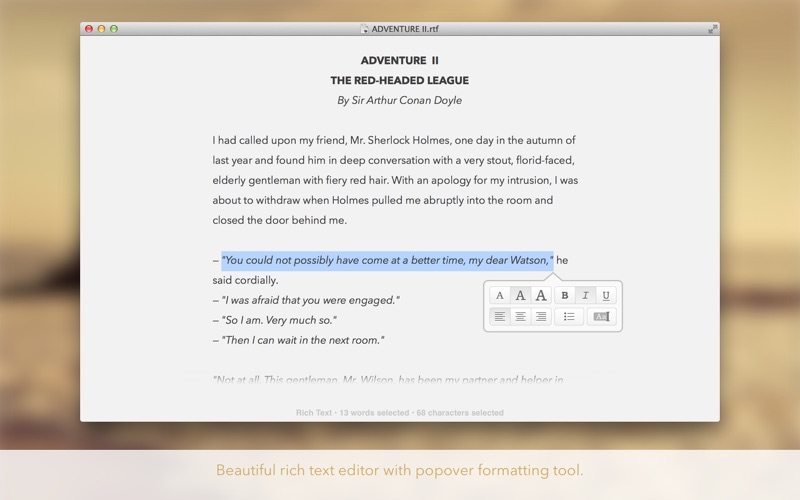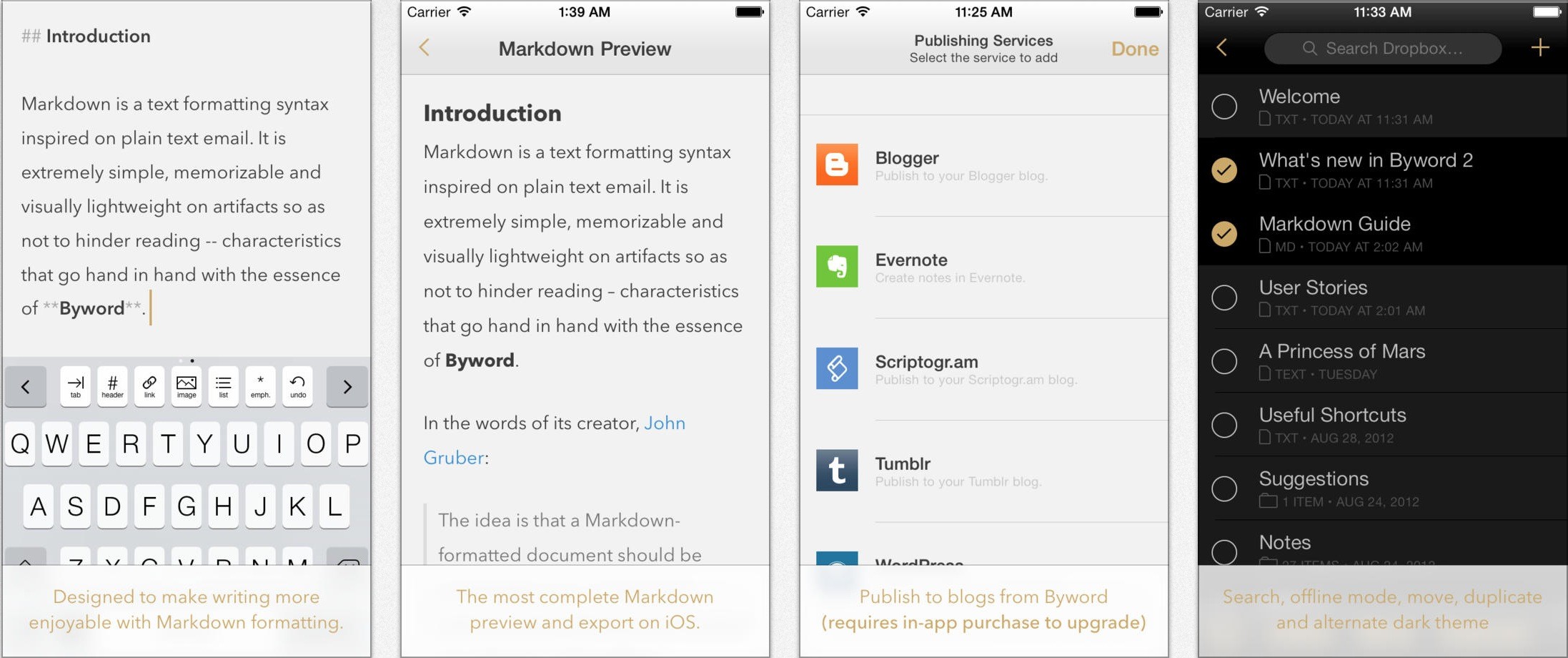

It's the easiest one - use the COUNTA function to get the number of non-blank cells in the checklist:įormula to count the number of checkmarked items (completed tasks)Ī completed task means a checkbox with a tick symbol in it, which means the TRUE value in a linked cell. Formula to calculate the total number of tasks Now, we will just write a few formulas to create a data summary for our Excel checklist. In fact, we have already done the major part of the job by adding check boxes and linking them to cells.
#BYWORD ALTERNATIVE FOR WINDOWS HOW TO#
How to make a checklist with data summary To quickly get a selection of checklist templates for Excel, click File > New, type "checklist" in the search box, and press Enter. Repeat the above step for other check boxes.In the Format Control dialog box, switch to the Control tab, click in the Cell link box and select an empty cell on the sheet to which you want to link to the checkbox, or type the cell reference manually:.Right click the checkbox, and then click Format Control.The next part of our Excel Checkbox tutorial will teach you how to capture the user selecting or clearing a checkbox and how to use that information in your formulas.Īs already mentioned, to be able to capture the checkbox state (checked or unchecked) you need to associate the check box with a certain cell.

Why almost? Although the checkboxes are inserted and you can now check or uncheck them by simply clicking on a box, Microsoft Excel is not able to respond to these changes because no cell is linked to any of the checkboxes yet. When the mouse pointer changes to a thin black cross, drag it down to the last cell where you want to copy the checkbox.ĭone! The check boxes are added to all the items in the checklist:Īs you can see in the screenshot above, our Excel checklist is almost ready.

Select the cell with the check box by using the arrow keys on your keyboard, and position the cursor over the lower right corner of the cell. Your first Excel checkbox is ready, and you just have to copy it to other cells. Or, right click the check box, select Edit Text in the context menu, and then delete the text. To remove the text " Check Box 1", right click the checkbox, select the text and delete it.To properly position the check box, hover your mouse over it and as soon as the cursor changes to a four-pointed arrow, drag the checkbox where you want it.The Check Box control will appear near that place, though not exactly positioned in the cell: Click in the cell where you want to insert the first checkbox (B2 in this example).On the Developer tab, in the Controls group, click Insert, and select Check Box under Form Controls.To insert a checkbox in Excel, execute these steps: The preparation steps are completed, and now we are getting to the main part - add checkboxes to our Party Planning list. If you are creating an Excel checklist or to-do list, the first step is to make a list of tasks or other items for which the check boxes will be inserted.įor this example, I've created the following Party Planning Checklist: Now, with the Developer tab in place, you get access to a host of interactive controls, including Check Box. Under Customize the Ribbon, select Main Tabs (usually it is selected by default), check the Developer box, and click OK.Right-click anywhere on the ribbon, and then click Customize the Ribbon… Or, click File > Options > Customize Ribbon.To add the Developer tab to the Excel ribbon, do the following: Like all other Form controls, the Check Box control resides on the Developer tab, which does not appear on the Excel ribbon by default.


 0 kommentar(er)
0 kommentar(er)
